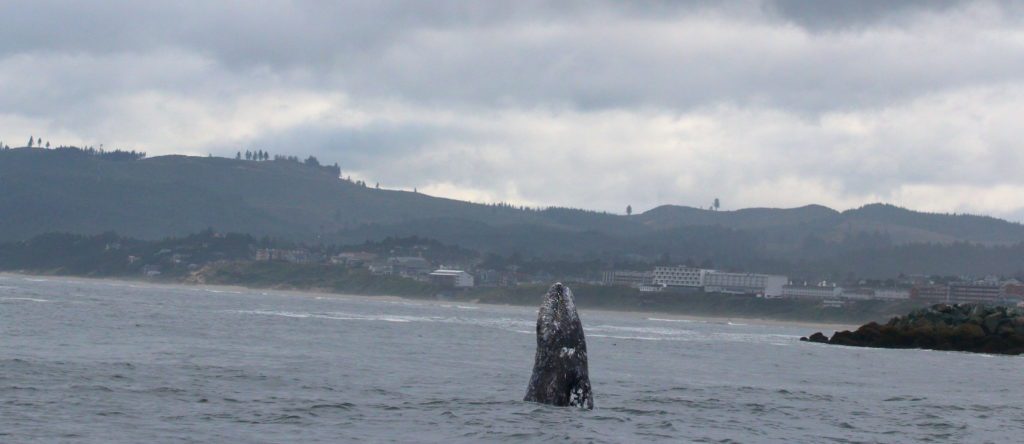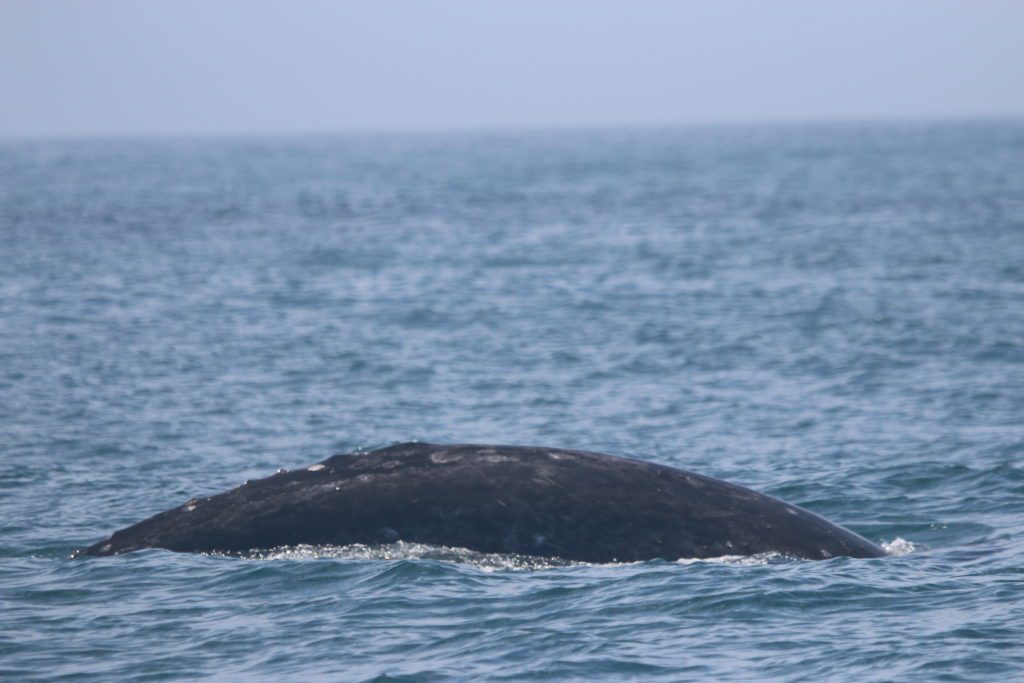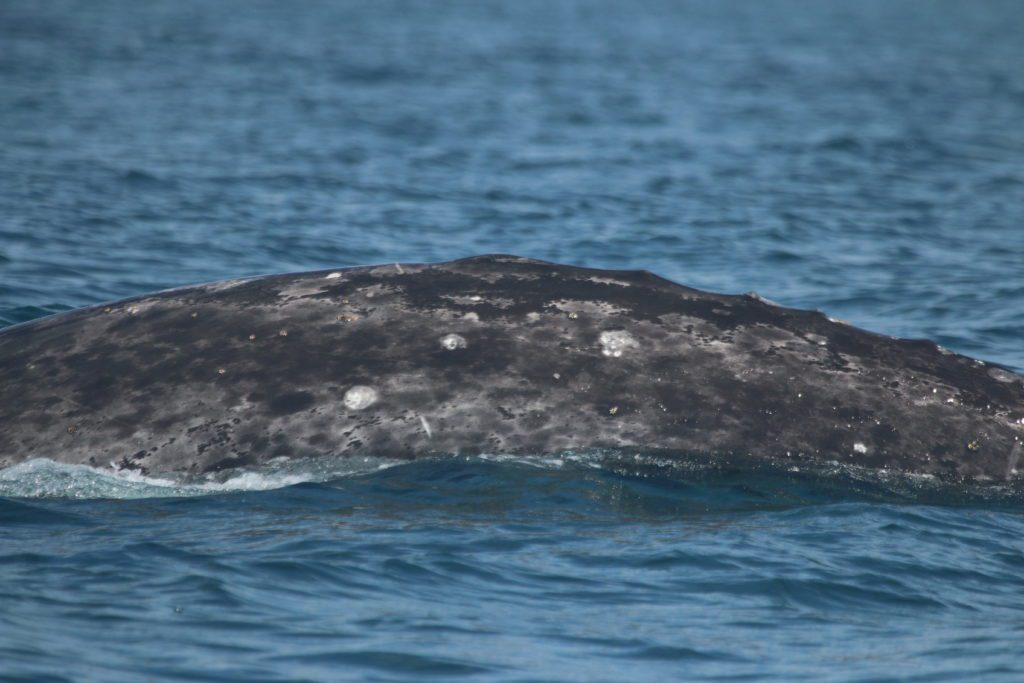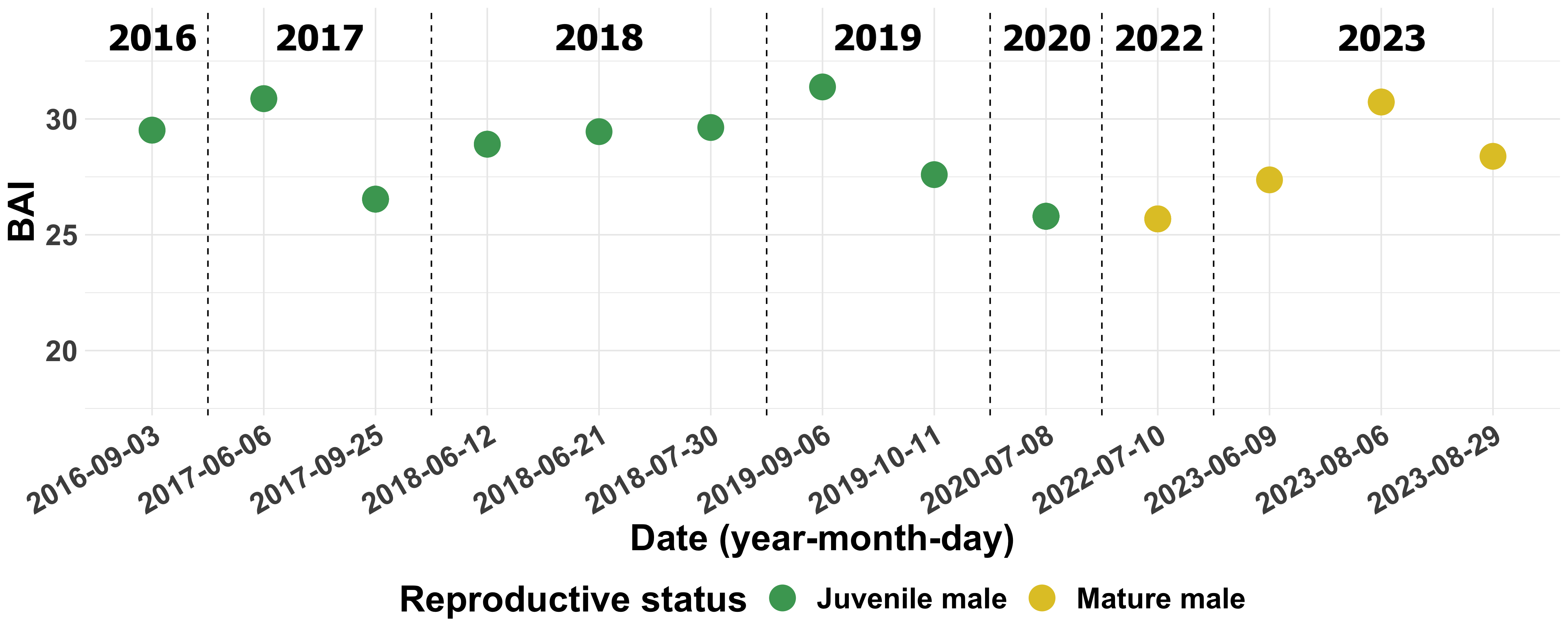Zorro is a 10-year-old male gray whale (as of 2024). We saw him many times throughout the 2017, 2018 and 2019 seasons, including filming him from a drone as he breached! However, we only saw him on three days in 2020 and not at all in 2021. Zorro is not the only whale we used to see regularly who we have not seen much or at all in recent years. This decline in the number of whales observed each summer in our Oregon study area is concerning and we are trying to figure out why. One theory we are investigating is decreased prey availability that may be related to a decline in kelp density. Nearshore reefs covered in kelp provide important habitat for gray whale zooplankton prey items like mysid shrimp, so a decline in kelp may be causing a decline in prey availability. In Port Orford, Oregon we collect data on kelp health, urchin density, zooplankton abundance, and gray whale foraging behavior, allowing us to document a coincident and dramatic increase in urchin density and decline in kelp health over the past six years. Alongside these changes, we have also documented decreased zooplankton prey and whale foraging. Many gray whales in Oregon, including Zorro, feed in kelp habitats using specialized feeding strategies like “headstands” where they beat their fins and fluke to keep their head down to gobble up a prey patch near the seafloor. We are investigating if individual whales prefer to feed using certain strategies and in certain habitats. Does Zorro like to feed in reef areas with kelp, and have we seen Zorro less in the past couple years because there is less kelp (and mysid prey) along the Oregon coast? We are trying to answer these questions by studying Oregon’s marine ecosystem from kelp to whales. Whales, kelp, and marine systems are dynamic and resilient, so we hope to see Zorro and his gray whale friends back in Oregon waters soon.
Learn more about how gray whale habitat in Oregon is changing and why kelp habitats are so important to gray whales.





